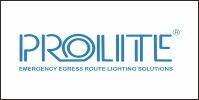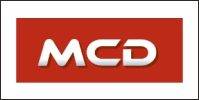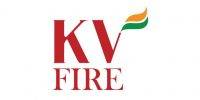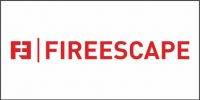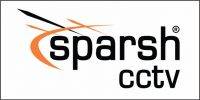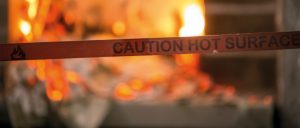 In today's world of innovative and increasingly challenging building design, it has never been more important to consider fire safety as an intrinsic part of the overall building design process. Life safety is paramount and cannot be compromised in any way. How can one ensure that fire safety provisions will all contribute positively to the overall objective in a consistent and compatible way with one another, as well as functioning as they should throughout their lifetime?
In today's world of innovative and increasingly challenging building design, it has never been more important to consider fire safety as an intrinsic part of the overall building design process. Life safety is paramount and cannot be compromised in any way. How can one ensure that fire safety provisions will all contribute positively to the overall objective in a consistent and compatible way with one another, as well as functioning as they should throughout their lifetime?
Traditionally regulators, designers, manufacturers and others rely on prescriptive measures and it is well known that in the UK, buildings must be designed and constructed so that “stability will be maintained for a reasonable period” in the event of a fire. There have been indications of moves within regulatory guidance from prescriptive rules to performance-based designs and risk assessment during occupation. This has resulted in greater responsibility for safety on construction companies and building owners or occupiers, including the installation and maintenance of passive fire protection (PFP) systems.
Therefore no matter which section of a building they may be working on, it is the duty of everyone involved in the specification or design to be aware of the overall fire safety strategy and to ensure that everything within their sphere of control complies with it.
It is vital that all protection measures are correctly designed, specified, installed and maintained so the building will behave as expected should an emergency occur. By their very nature fire safety provisions are 'standing by' until there is a fire and only then will their fire performance in a live situation be demonstrated.
Passive fire protection products
Passive fire protection is built into structures to provide stability and is vital to the performance of a building in the event of a fire. Such protection is either provided by the materials from which the building is constructed, or is added to the building to enhance its fire resistance.
As an example a component with a fire resisting function can resist fire in one or more of three ways. It must resist structural collapse and/or it must resist the passage of smoke and hot gasses (integrity) and/or it must resist heat conduction (insulation). The starting point for fire safety evaluation will always focus on fire testing evidence from specialist independent laboratories in accordance with a range of relevant standards, such as BS, EN, or other national or international standards and codes. The scope of the performance will be further enhanced by assessments (and/or engineering judgements) undertaken by the laboratories or fire consultants.
Environment has a big part to play and these individual fire resistant elements might come into their own in harsh and hazardous offshore and on shore environments. Therefore the assessment of the entire structure must take into account stability when exposed to these environmental factors. It is particularly important that the individual fire safety products still function and fulfil their original fire protection tasks after lifetime environmental exposure within the context of the whole structure.
The best way to ensure products' quality is by third party certification which links the tested/assessed product with the actual factory production control and ensures traceability from raw material to finished product.
Installation, inspection, risk assessment and maintenance
However, the performance of a fire safety product is not only determined by the product performance in the testing and approval process, it is also largely determined by the quality of the installation process.
Investigations by Warrington Certification have indicated that the PFP in some buildings has been deviating from the highest quality. No matter how impressively the product has performed in testing and assessment, it is vital that the installation strictly complies with the manufacturer's instructions and has been tested and approved. Whilst legislation does not generally cover installation of PFP products, installers have an obligation to install products completely and correctly to make sure that they will work as intended in the building.
The main contractor should identify competent contractors for the work concerned and, if a manufacturer's product has been specified, advice should be obtained on approved or recommended installers. Alternatively, certification bodies, such as Exova BM TRADA and Warrington Certification, carry searchable directories of third party certified contractors on their websites. Ongoing training of those responsible is important to understand existing regulations, ie the requirements of the Regulatory Reform Fire Safety Order (RRFSO); what the responsible person needs to consider within fire risk assessment; the legal obligations of the fire risk assessor; and how third party certification can be a valuable resource and provide confidence in the process.
Given the installation complexities of most fire safety products, installation by competent contractors is essential, particularly in order to maintain the product's warranty. The best way to safeguard this is to use a third party certificated installer whose skills, training and competence will not only have been validated by an external organisation, but also backed up by random inspection of completed works. It is crucially important that the installation of passive fire protection, including the correct and timely scheduling of all the sub-contractor work, is factored into the main work programme.
The specialist contractor will not only fully appreciate and fulfil the design specification without compromise, but should also undertake their own quality assurance checks to ensure that the work meets the specification. Often this is complemented by checks or audits that manufacturers undertake to ensure that their products are being installed correctly and/or by checks carried out by bodies certificating the installer.
Regular inspection is also important to identify deterioration or damage so that remedial work can be carried out promptly to maintain a continued level of protection. This requires a robust risk management system which covers: identification of the fire safety element; determination of the criticality of each element; assessment of each anomaly noted; risk assessment; and allocation of urgency rating for remedial works. Anomalies in the fire safety system identified by inspections should be repaired based on the risk assessment specific to the location and evaluation of the damage.
Conclusion
Legislation and guidance in many parts of the world impose increasingly strict requirements on specific products. The level of fire safety associated with construction is normally achieved as a result of various fire safety standards or codes. In general, prescriptive standards or codes serve the needs of regulators or approval authorities – in the vast majority of traditional constructions – well.
However these standards as they stand on paper do not explicitly address the concerns on safety of life or properties over the full lifetime of a structure. Over time a less conventional “engineering” approach has increasingly been adopted in modern designs, bringing a challenge to the more fundamental fire safety designs.
Life safety is not something that can be compromised. By their nature the fire safety provisions are 'standing by' all the time and disasters are waiting to happen if one weakest link fails in the entire chain.
In order to ensure that a fire safety system remains relevant to the needs of an industry and the buildings used within it, the characteristics of integral fire safety needs careful consideration. Central to good fire protection in engineering or safety specification is the use of genuine and appropriate product testing, assessment and certification. Robust testing within the overall production of industrial structures will ensure they remain fit for purpose, their fire safety elements are installed correctly and that over their lifetime they are managed and maintained well.












